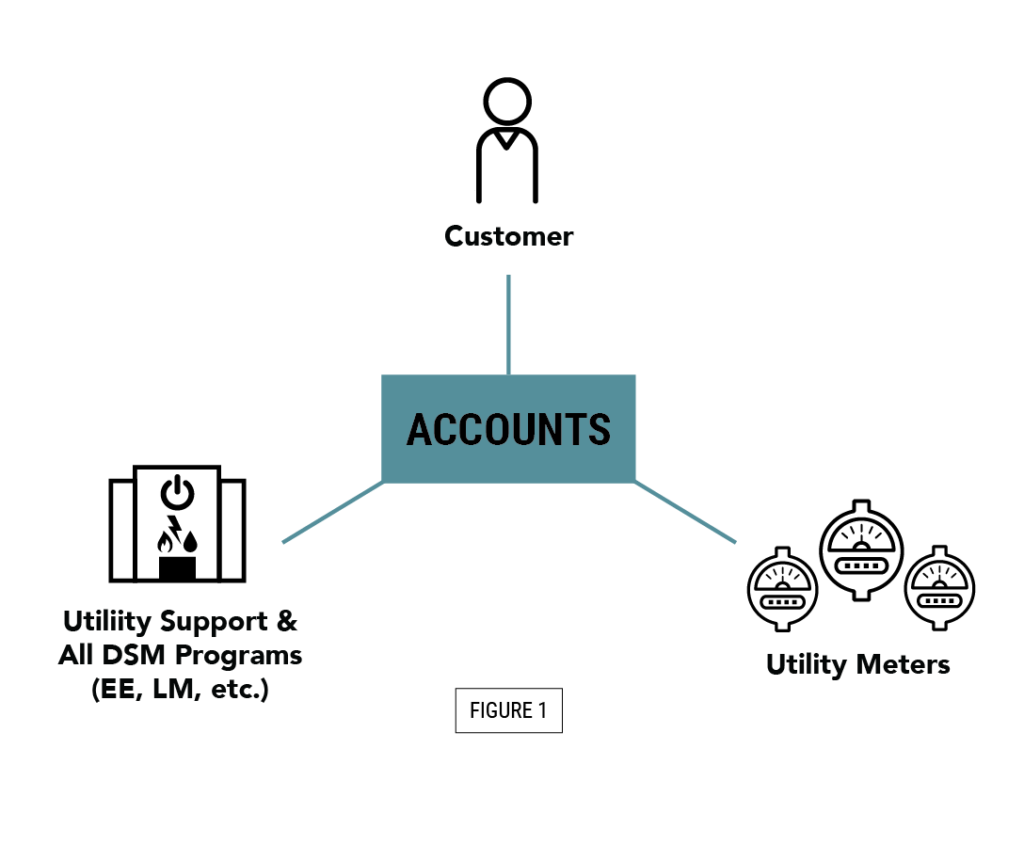Extending DEI to Energy Equity and Energy Efficiency in Buildings
Part One
Energy Efficiency is Key to Energy Equity
BIPOC1, low-income and other marginalized groups are disproportionately affected by the impacts of climate change.2 Additionally, these groups are more likely to suffer from energy insecurity and burden – spending more of their income on energy and/or struggling with access entirely.3 Numerous organizations across the nation and the globe are calling attention to these issues, including Energy Efficiency for All, the Energy Equity Project, ACEEE, Elevate, and City Energy Project. And slowly but surely, energy policies and programs are starting to incorporate an equity lens. Energy efficiency is an important part of addressing energy equity issues, but there are complex, systemic issues in the way.
The Problem of Buildings vs. Accounts

However, connecting the dots between those paying the bills and the buildings they live in is not as easy as it may seem. Utility business models and programs are built around account-holding customers [Diagram 1]. Energy bills are paid based on accounts(s), and utility identification of prioritized populations is done at the customer account level. In the case of a multi-tenant building, if individual customers are paying the bills, then utilities do not have a view of building-level consumption. Utility data includes customer information, meter information and utilization data, but none of that is building level or includes building mapping. This is an operational challenge when whole building data is requested for multi-tenant buildings and a barrier to making the most of energy efficiency investments.

When it comes to reducing energy costs for customers, those energy efficiency investments are often the most impactful and cost-effective option. In general, building-level interventions are the highest yield – things like weatherization and HVAC upgrades.5 Meanwhile, building-focused energy policies and work done on buildings are justifiably focused on…buildings and not utility customer accounts [Diagram 2]. Since building-level work often involves more upfront cost, the split incentive between utility customer (renter) and property owner is a barrier, even for investments that yield significant savings and particularly in communities suffering from a higher energy burden.
Utility Data for Baselining Buildings at Scale
The City Energy Project’s Incorporating Equity into Energy Benchmarking Requirements lays out many dimensions of this issue. Another consideration is a lack of access to building level data, particularly for multi-tenant buildings. We need to be able to identify the worst offending, least efficient, potentially most impactful buildings for investments in energy efficiency work. But we can’t do that without baseline energy data at scale. Buildings with baseline data can move through the process of analysis, further data collection, ROI determinations, investment, and energy savings outcomes. Buildings without baseline data never make it to the top of that funnel. And neither do their utility bill-paying, account-holding tenants.
As the will and financial backing necessary to reduce energy burdens in BIPOC communities increases, we need to leverage existing utility data for our initial building-level analyses. Often this is benchmarking via the EPA’s ENERGY STAR Portfolio Manager. Equipping utilities and their program administrators with a building level view to overlay with account holder information can be a first step in identifying opportunities for investment. Whole building data from utilities makes assessments and pre-audit work more meaningful as well. At scale, leveraging utility data is one of the most impactful things we can do to get energy efficiency work happening in communities that need it the most.
1 BIPOC refers to Black, Indigenous, and People of Color.
2 EPA. 2021. Climate Change and Social Vulnerability in the United States: A Focus on Six Impacts. U.S. Environmental Protection Agency, EPA 430-R-21-003. www.epa.gov/cira/social-vulnerability-report
3 Memmott, T., Carley, S., Graff, M. et al. Sociodemographic disparities in energy insecurity among low-income households before and during the COVID-19 pandemic. Nat Energy 6, 186–193 (2021). https://doi.org/10.1038/s41560-020-00763-9
4 Drehobl, A,. Ross, L., and Ayala, R. 2020. How High are Household Energy Burdens? Washington, DC: American Council for an Energy-Efficient Economy. https://www.aceee.org/sites/default/files/pdfs/u2006.pdf
5 Berg, W., E. Cooper, and M. Molina. 2021. Meeting State Climate Goals: Energy Efficiency Will Be Critical. Washington, DC: American Council for an Energy-Efficient Economy. https://aceee.org/research-report/u2104.
Check out the latest from our blog…
Interested in learning more about Calico's team?
Looking for additional resources?
Head to our Resources page for more industry perspectives and product information.